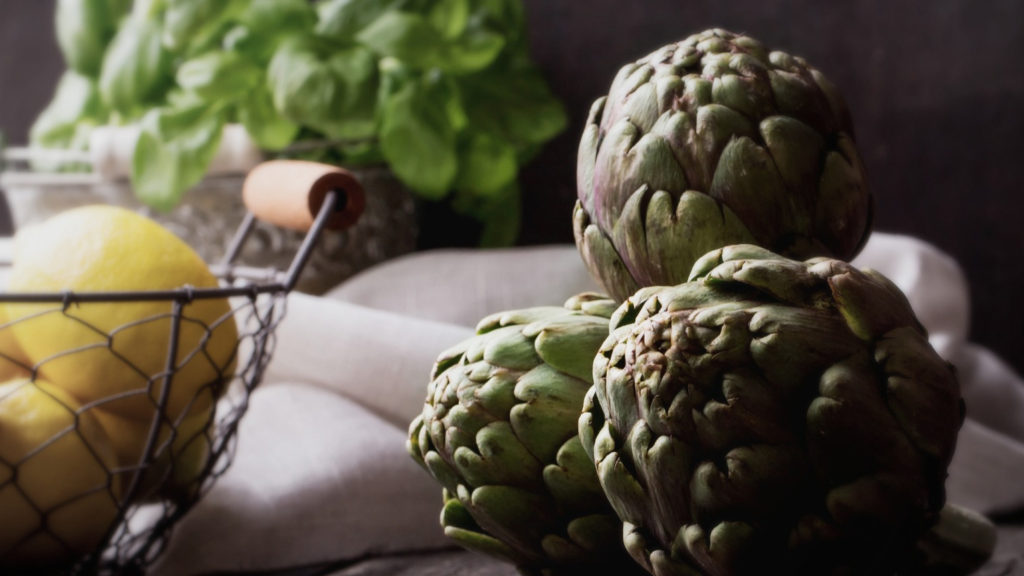While winter has only just begun to loosen it’s icy grip here in Juneau, a visit to the produce section of any local grocery store will provide you with harbingers of Spring. One sure sign of Spring is the appearance of artichokes in the produce case.
I remember my first encounter with this improbable looking vegetable. I had been reared on the East Coast where artichokes were still unknown. I was eating with some friends in California, and artichokes were served as an appetizer. I wasn’t sure what to do with the thing, with it’s threatening spiky leaves. But I closely observed the others and, following their lead, took a nibble of the soft part at the base of each leaf. Peeling back the leaves, I was again stymied when I got to the center and found a hairy looking mass. I took a bite of the fibrous choke and almost gagged. Fortunately, someone came to my rescue and showed me how to peel away the fibers and get to the heart underneath. It was delicious. Sweet, smooth and nutty, it made all the effort worth it.
Artichokes are the quintessential slow food. They can only be consumed at a leisurely pace, just a small tantalizing bite from each leaf until you finally reach the prize at the center. They are not only delicious, but because of the deliberate care with which they must be eaten, they have a civilizing effect on those who eat them, bringing the eater into a more direct relationship with his food.
Bringing people into a more intimate relationship with the foods they eat is one of the goals of the Slow Food Movement. Founded by Carlo Petrini in Italy in 1986, Slow Food is an international association which promotes food culture and seeks to serve as an antidote to fast foods, the industrialization of agriculture, and the subversion of gastronomic traditions by commercialism. In our hurried and harried modern world, it is good to have encouragement to slow down, enjoy our food, and cultivate the opportunities eating provides for conviviality and a deeper connection both to the land and to tradition. But I digress.
Artichokes are not only delicious, but they are good for you. They are a tonic food for the liver and gall bladder. Spring time, when artichokes are at their peak availability, is considered to be the time when liver and gall bladder most need support. When choosing artichokes look for compact heads with fresh looking green leaves. When the heads begin to open and the tips of the leaves turn brown, the artichoke is past its prime.
Preparing artichokes is easy. Simmer them in a pot with a few inches of water for at least 45 minutes. For larger artichokes, leave them in an hour or more. Artichokes may be eaten plain, but I like them best with something to dip them in. Melted butter is especially delicious with artichokes. Melt some butter, add a squeeze of fresh lemon juice and a dash of tamari, and you will have an appetizer that will get any meal off to a leisurely start, and perhaps nudge you a little closer to life in the slow food lane.
-David Ottoson


